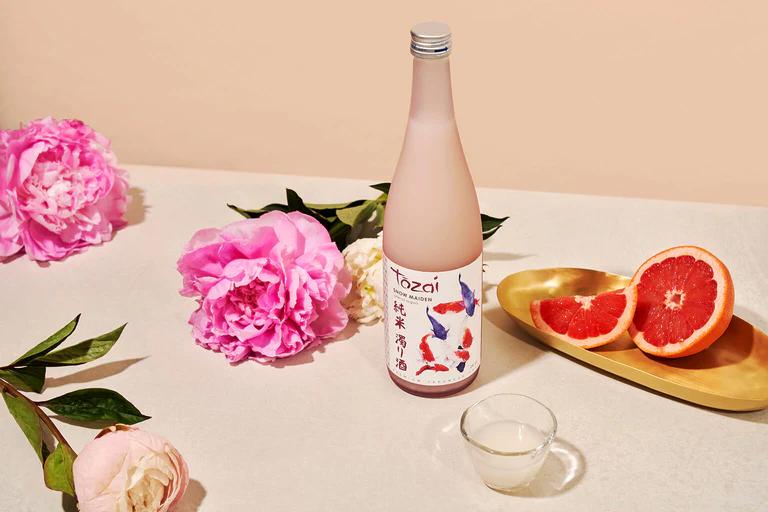Finally, spring! And few things reflect the newness of life more than the flowers in bloom.
Flowers have always held an important role in Japanese culture. From fabrics to family crests, interior accents in homes and hotels, delicate ceramic dishes, even city sewer covers, flowers adorn and impart special meaning to everyday objects.
Cherry blossoms are the most well-known of Japan’s blooms but there are a handful of other flowers that carry significance in Japanese society like the imperial chrysanthemum, which represents nobility and longevity, the plum blossom for fidelity (and some varieties that produce “ume” fruit which is brewed into delicious plum sake) and the red camellia for love. Flowers also played a role in societal expectations as women were once expected to be knowledgeable in “Ikebana” (Japanese flower arrangement) and the tea ceremony. Such expectations are no longer the norm in modern-day Japan but “Hanakotoba” (the secret language of flowers) continues to find its way among artists, nature lovers and sake brewers.
How do flowers fit into sake production?
You might recall that only a few ingredients are used in sake brewing: water, rice, koji and yeast. The last ingredient, sake yeast, greatly contributes to the aroma components of sake. In other words, our experience of aromas (floral, fruity, ricey or other) comes down to the type of yeast used in the brewing process.
Every strain of sake yeast produces its own characteristics. The Brewing Society of Japan, established in 1906, has the largest collection of yeast strains which are distributed to licensed breweries. Some specialty strains are cultivated and used exclusively by prefectures, breweries and research centers to produce their unique sake.
One of the most exciting discoveries by a professor at the Tokyo University of Agriculture is “hanakobo,” the use of wild yeast isolated from flower nectar to brew sake. This epic milestone has led to a gorgeous array of specialty sake with unique aromas and flavors using isolated yeasts from strawberry, hibiscus, azalea, marigold, even the queen of the night flower that blooms only once a year! Who knew agriculture could be so cool or that science could help expand our world of sake!
Recently, we invited a small group of friends over for lunch at our house, some of whom we hadn’t seen in several months due to the pandemic. It was such a nice time to catch up and reconnect with each other. Here are the four sake we tried and recommend this spring.
Kamikokoro “Tokagen” Shiboritate
“Shiboritate” is the new-new! Meaning “freshly squeezed,” shiboritate is described as sake that is available immediately after pressing (read more about the First Sake of the Year). As we chatted over our floral centerpieces and baskets, we were delighted to see the guys partake in the fun, too–it might’ve been the sake that attracted them to hang around!
Kamikokoro Brewing Company is the only brewery that uses white peach yeast to brew sake, and “Tokagen” Shiboritate is a seasonal release made in limited quantities so we were very lucky to be able to get our hands on it. Paired with soft brie, rosemary crackers and shrimp cocktail, it was juicy and bright like spring sunshine, and a nice aperitif for our gathering. This was my first time trying shiboritate sake and I can’t wait to explore more!
Heiwa “KID” Junmai Daiginjo
We then moved to Heiwa “KID” Junmai Daiginjo, which was slightly drier than the first sake but equally enjoyable. Although not made with flower yeast (I chose it for its pink and pretty design), it has notes of white flower and a fruity and floral aroma. This sake is brewed Kyokai Yeasts 901 and 1801, both known for producing ethyl caproate which gives off a green apple aroma. I’d love to try this with raw oysters, too, for its light and dry nature.
Joto “One with the Clocks”
We really enjoyed Joto “One with the Clocks” with our lunch of Korean bulgogi and kimchi. Made with their own proprietary apple yeast, this sake was very smooth and elegant. The apple notes complemented the bulgogi meat both in flavor and texture by offering a soft mouthfeel. At first glance, the bottle looks bold with its black and gold design, but it expresses the 72 hours it takes to mill the rice; a very arduous and careful process. This is a lovely sake to drink after a long winter and be reminded of the gift of spring.
Amabuki “Himawari”
The lunch party was over, but we had one more sake to try from Amabuki Brewing Company of Saga prefecture. This brewery is specially known for making all their sake with flower yeast (be sure to try Amabuki “Strawberry,” a playful pairing for chocolate, and Amabuki “Gin no Kurenai,” aka “Pink Lady” for its pink hue that comes from the use of ancient black rice).
Amabuki “Himawari” (meaning “sunflower”) is brewed with sunflower yeast and intended for warm weather days. Although it can be served at any point in a meal like the others in its line, I enjoyed it more after giving it a chance to breathe. This might’ve been due to it being a “namazake” or unpasteurized sake which usually has bolder flavors (different from “nigori” or “cloudy sake”). We enjoyed it with a fresh salad and crab cake.
This sake’s dry profile had me craving for savory chicken yakitori, and I also look forward to trying it with other seafood dishes and blue cheese as recommended by Tippsy’s tasting notes. At the same time, it reminded me of a London floral gin so we tried it with lychee fruit and mint for a refreshing afternoon drink. I’d love to experiment with it as a base for sake-inspired cocktails, too.
Have you tried sake brewed with flower yeast? Which spring sake are your favorites and what kinds of food do you like to pair them with? Let us know at #tippsysake!















